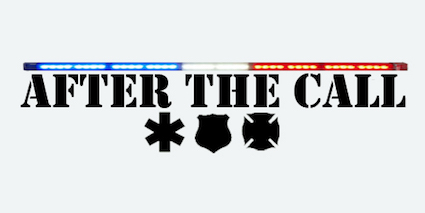In Defense of Families
When you are in desperate need of money and someone hands some to you, you would not exclaim, “That’s not enough”. But, for the purpose of this plea, that is what I am doing.
Today’s movement toward mental health in the lives of First Responders is amicable. We need something. And, furthering this push for aid the Ontario Association of Fire Chiefs has adopted a “fire” tailored program, the Road 2Mental Readiness (R2MR) from military fame, to fit the needs of the individuals in the fire service. Police have already had the program and are suggesting some success. It is rumored that EMS will, soon, also have their own program. Let’s hope that they continue this so we can include our bleeding friends in Corrections, Dispatch, and Emergency departments.
These are all good things.
So, perhaps in light of this I sound a bit crass or callused, but hear (or rather, read) me out. These movements are good things; but, they are not enough. Not only are they insignificant given the level of mire we find ourselves in, they ignore possibly the single greatest preventative aspect of any First Responder; the family.
Why are we continuously suggesting that these issues and concerns are individualistic? At first, it was status quo to write off the few who spoke out around mental health issues as few “bad apples”, though this attitude certainly isn’t extinct. Fast forward to now, and we are acting to “… ensure that the most appropriate training is provided when required to ensure CAF personnel are prepared mentally for the challenges they may encounter.” (Taken from the Canadian Forces site: http://www.forces.gc.ca/en/caf-community-health-services-r2mr/index.page).
To be fair, there is a section dedicated to information for families. But the training is, essentially, for those entrenched. Our attitude has changed, but only for the individual.
Am I being nit-picky? Perhaps. But, when disaster strikes, a community corrals and comes together in a way that was unprecedented prior to the incident. So, we should adopt the same approach when disaster strikes an individual. A community is much better suited to deal with the multiplicity of issues that arise in a mental health crisis. Luckily, for many of us, we were born into a small community already; our family and friends.
Mental health is a Team approach. Walk into a mental health clinic today and you, more often than not (unless it is private), you will hear that “we are a team here at, so-and-so”. You’ll likely have signed consents that allow some of your information to be shared throughout the team to ensure continuity in services. From there, with your permission, you’re set-up with people from different organizations that specialize in the help you need.
But, in the mental health field it is recognized that marital issues, addictions, stress concerns,(or “enter other disorder here”) are not isolated issues. We do not live in a bubble. Mental health struggles are, more often than not, married to a co-occurring disorder (“concurrent”, in mental health babble). So, when you see an counsellor you are likely to be, or have already been, connected with a psychiatrist, or have a family doctor or registered nurse on board. Whatever the configuration, you have a team. Like-minded individuals all bolstering ethics that, though written differently, have ascribed to doing no harm and increasing good. Research has shown that this approach, sometimes falling under the name “biopsychosocial approach”, is garnering the greatest results.
Individuals in these new training developments are given all the tools that they need to help themselves from developing an issue, the tools to recognize the beginning of a problem, and perhaps a few resources to connect with if an issue finally does arise. And, there are training programs that help with the aftermath of “headliner” calls. Great! For a lot of people, that is going to save a lot of time, resources, heart-ache, self-doubt, self-harm, and even attempts at dying by suicide.
When they get home, however, we have not developed a “language” that can be shared between them and family members. They cannot talk about their experiences or the level of stress they are under. Moreover, First Responders are not very keen on talking about the gruesome details to their loved ones for fear of traumatizing them. Very valid and great reasoning for avoiding to explain said details; however, that is a very weak argument for not talking of the emotions felt around the situation.
We need to remember that we are not alone in these issues. PTSD is, arguably, one of the worst disorders that can strike a First Responder. Yet, PTSD is often occurring alongside addiction issues, marital issues, other mental health issues. If left unchecked, self-harm can become the only answer to the pain felt.
I have consoled family members, watched families say good-bye to loved ones, seen the concern of a parent when they have heard their child was in an accident. So have a lot of those reading this right now. I have watched families stand strong together as they stand idly, helplessly, as all their belongings perish in a fire. The shaking, the tears, the fear, the exasperation of people, are all images that anyone in this field has or will have eventually. Not all will stick with you, but some will. But, the more people corralled around during these times the better the outcome for that person.
Let us begin, then, to speak about the family members. They are also injured, hurting, and needing help. But, as we move forward, they seem to be only an echo behind the individual. Can we let them stand beside us, instead of behind us?
Nick.
